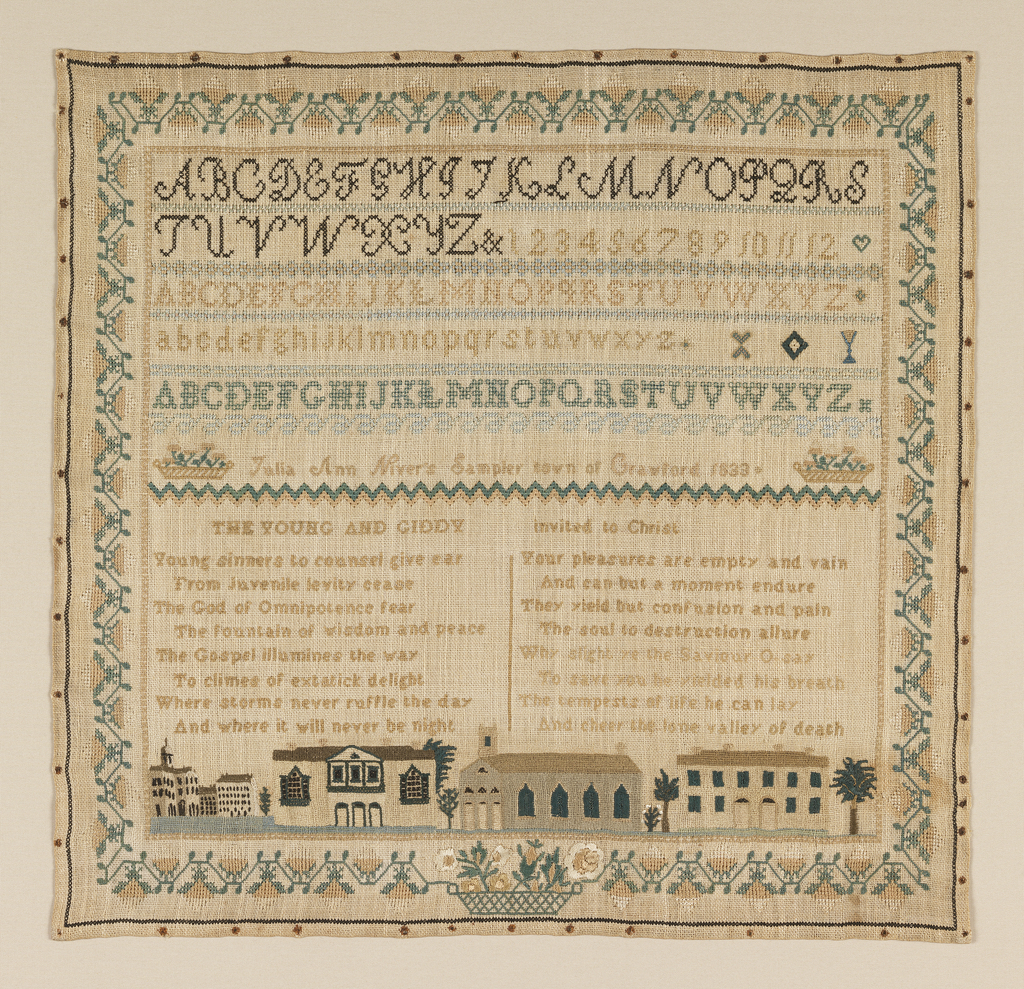Julia Ann Nivers’ sampler features a townscape beneath three alphabets and a religious verse, enclosed in a border of stylized strawberries. Of the buildings depicted on the sampler, only the Hopewell Presbyterian Church can be identified. Construction on the Gothic Revival building, which still stands today in Julia’s hometown of Crawford, New York, began in 1831. The first services were held there in 1832, which may have been why Julia chose to highlight the church on her 1833 sampler.
Born in 1823, Julia Ann Niver was the daughter of Elizabeth Rumsey (1795–1863) and Ephraim Niver (1789–1879). She had at least one sibling, an older sister, Rachel Ann (1819–1898). In 1849, Julia married David Smith (b. 1823), a farmer. The couple had a son, Charles W., born in 1853, who also became a farmer. Julia lived until at least 1900, at which time she was seventy-six, widowed, and living with her son, two farm laborers, and a domestic servant.
Jennifer N. Johnson holds a degree from the Parsons/Cooper-Hewitt Master’s Program in the History of Decorative Arts and Design. While pursuing her studies, she completed a two-year fellowship researching the Cooper-Hewitt’s American sampler collection. She is currently a Marcia Brady Tucker Fellow in the American Decorative Arts department at Yale University Art Gallery.
